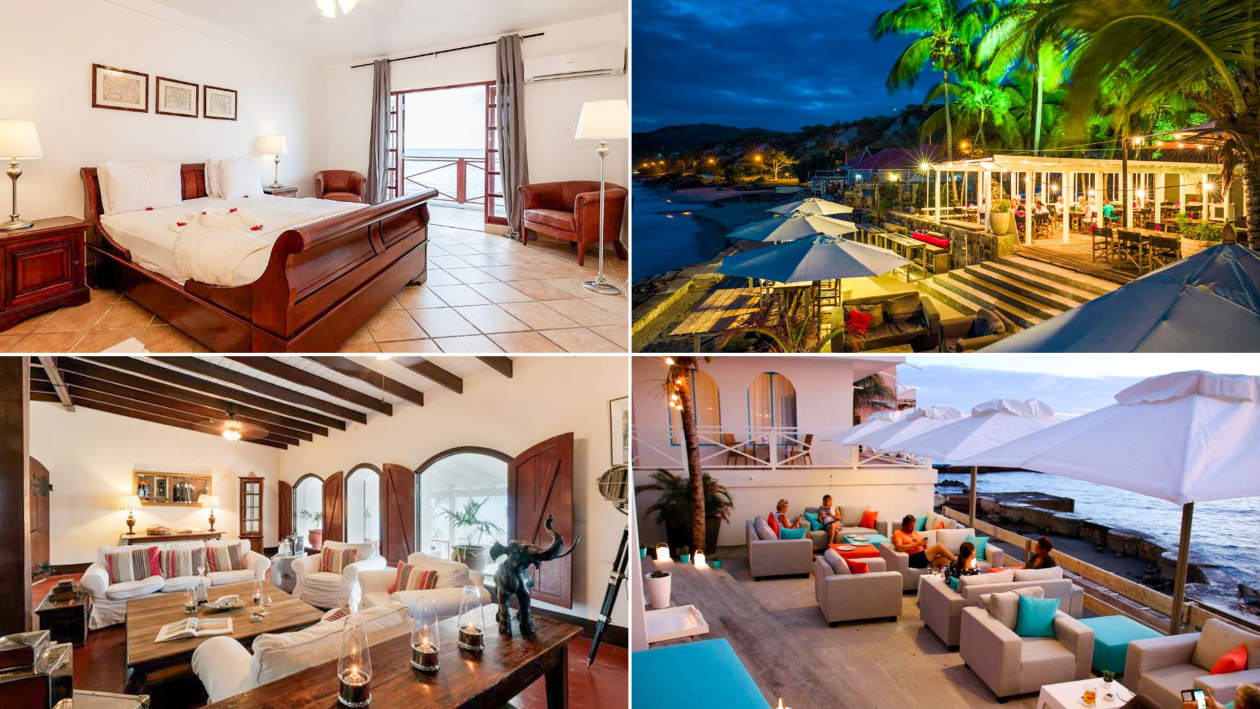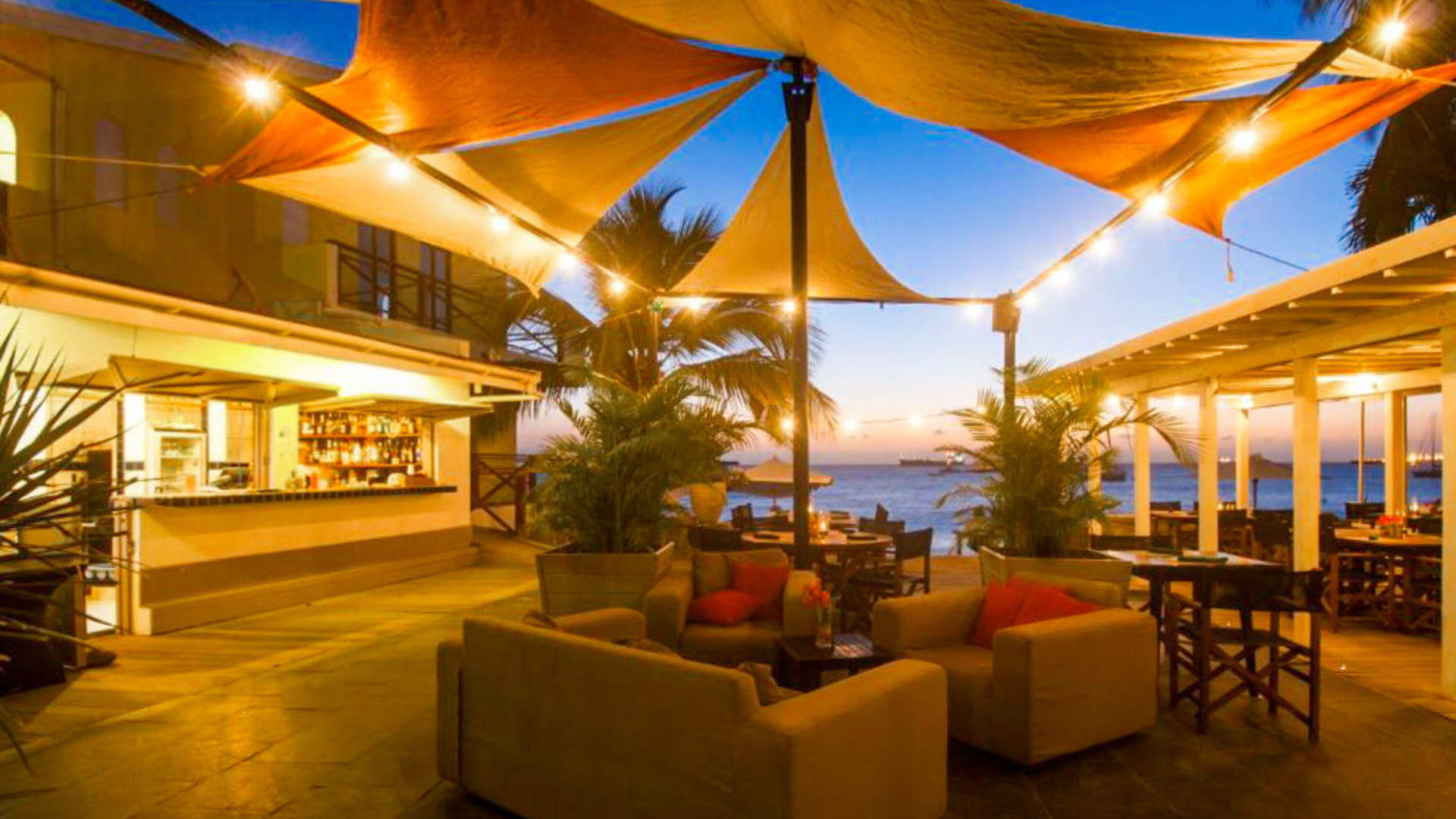The Old Gin House Hotel - A Journey to St. Eustatius' Historic Gem
Are you looking for a perfect getaway in the Caribbean, a Statia hotel, where you can enjoy the best of nature, culture, and adventure? If so, you might want to consider staying at the Old Gin House Hotel in Oranjestad, St. Eustatius, a hidden gem that offers a unique and unforgettable experience. The hotel is conveniently located on Orange Bay, right next to Scubaqua Dive Center in a quiet and historical area, expertly restored while preserving its colonial charm and elegance.
This Statia Hotel Has Historic Roots
The Old Gin House Hotel features a pool, a restaurant, and a terrace, where you can relax and enjoy the amenities. Built with local stone and wood, and decorated with antique furniture, artworks, and tropical plants, the hotel also boasts stunning architecture that blends in with the natural beauty of the island.
 Enjoy the breathtaking scenery of this Statia hotel, with turquoise waters, lush green hills, and the blue sky. You can also watch the sunset and the stars, and feel the magic of the island. The hotel is very romantic and quiet, perfect for couples and honeymooners. You can also enjoy a refreshing drink, a tasty snack, or a good book while listening to the sound of the waves.
Enjoy the breathtaking scenery of this Statia hotel, with turquoise waters, lush green hills, and the blue sky. You can also watch the sunset and the stars, and feel the magic of the island. The hotel is very romantic and quiet, perfect for couples and honeymooners. You can also enjoy a refreshing drink, a tasty snack, or a good book while listening to the sound of the waves. 
The Old Gin House Hotel is a Statia hotel that also offers delicious cuisine at the waterfront restaurant, rated as the best on the island by TripAdvisor, where you can relax and savor the delicious cuisine of the Caribbean and beyond.

This Statia hotel has several oceanfront suites, fully equipped with modern amenities and stunning views. The rooms, suites, and apartments are spacious, cozy, clean, and charming. All rooms have comfortable beds, and feature a TV, refrigerator, air conditioning, and a balcony with garden or sea views. The private bathrooms come with a shower, free toiletries, and towels.
Imagine waking up in a comfortable oceanfront room with the gentle sound of waves crashing, enjoying a hearty breakfast in a beautiful setting at the Old Gin restaurant, as the sun rays gently paint the scenery in soft golden hues. You have a whole day ahead of you, and you can choose from many activities that the hotel and the island offer.
Activities Possible from Your Statia Hotel
Dive into the marine park and see coral, sponges, wrecks, and diverse sea life. Explore numerous historical dive sites and recently sunk wrecks in this diver’s paradise. Book your dive with Scubaqua Dive Center, located next to the hotel, for a safe and fun experience. Hike up the Quill, a dormant volcano with a rainforest in its crater. Pick your trail and enjoy the spectacular views of the island from the top. See a rare tree that is one of the tallest in the Kingdom of the Netherlands.

Visit Fort Oranje, where the First Salute happened in 1776. See the old town walls, warehouses, and cannons. Explore the museums, churches, and monuments. Meet with the friendly locals who will welcome you and share their stories. Relax on the black sand beach or on the hotel’s terrace, where you can soak up the sun, feel the breeze, and admire the views.
You can also enjoy a massage, a yoga session, or a meditation class, and feel the stress melt away. You can also visit the shops and the markets, where you can find souvenirs, crafts, and local products.

After a day full of activities, you can watch the sunset with a glass of wine or a nice cocktail and dinner at the Old Gin restaurant and share experiences, fun, and laughter with your partner, friends, or fellow travelers. Staying at the Old Gin House Hotel in Oranjestad, St. Eustatius is more than just a vacation. It is an adventure, a discovery, and a delight. It is a chance to experience a different side of the Caribbean, authentic, diverse, and captivating. So, what are you waiting for? Book your stay today and get ready for the trip of a lifetime.
This Statia hotel is managed by the same group as the famous Holland House Beach Hotel in St. Maarten.
The Old Gin House Hotel
1 Oranjebaai, Oranjestad, Caribbean Netherlands
(+599) 318-2319 |
www.theoldginhouse.com
VISIT THE OFFICIAL WEBSITE OF THE OLD GIN HOUSE HOTEL









